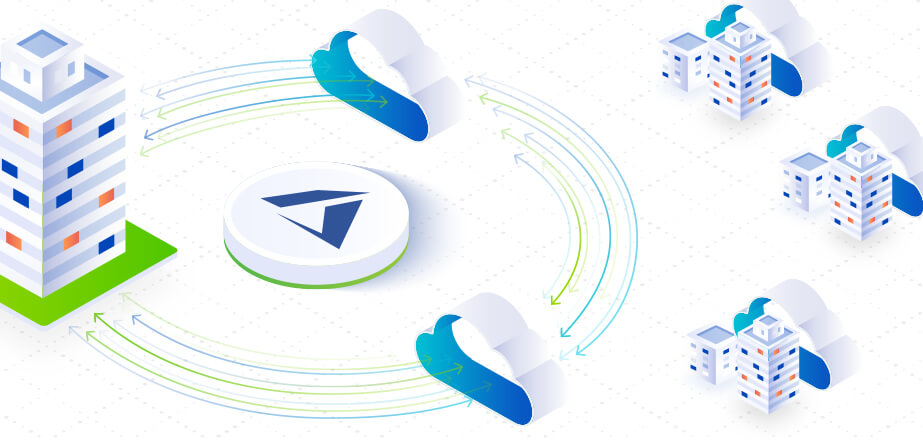Microsoft offers many toolsets to enterprises from on-premises to cloud that help keep businesses running, and with Microsoft Ignite this week the learning about these tools will be endless. But it’s more than the tools that matter, it’s the enterprise data that if lost due to security breaches, technology failure, unforeseen disasters and even more that can stop business in its tracks. Let’s take a closer look at data protection as a whole and how Cohesity can help protect your data regardless of the Microsoft technology you are using to get the job done!
Cloud Data Protection
Often when we think about cloud we naturally lean towards the concept that our cloud provider has our data protected. But as you start peeling back the layers make no mistake that you will need to take steps to protect your data to meet your business-level recovery Service Level Agreements (SLAs). A solution that can protect all your data regardless of location through a single pane of glass can simplify, streamline and expedite your recovery processes. Let’s look at how Cohesity can help with protecting enterprise data that lives in these Microsoft Cloud solutions.
- Azure virtual machine protection—The responsibility for protecting enterprise data in the cloud lies with you, the cloud customer. The cloud provider is responsible for keeping the backend infrastructure up and running. Your data is your data—protect it with your Recovery Point Objectives (RPOs) and Recovery Time Objectives (RTOs) in mind. To see how Cohesity can help protect this important enterprise data, check out this breakdown on how to “impress your boss” with the details.
- Microsoft 365 Protection—M365, formally known as O365, is the most widely used cloud service by user count, and 1 in 5 corporate employees now use an M365 Cloud service. With the increasing adoption of SaaS, it’s important to not confuse availability with data recoverability. Don’t think you need to protect the following M365 enterprise data in Exchange Online, SharePoint Online, OneDrive and more? Get your reality check here!
On-Premises Data Protection
Enterprises still maintain a hybrid architecture where some of their applications are in the cloud and others are on-premises. Some of the common tools deployed are Windows servers, Exchange, Active Directory and SQL server. All typically will have some level of needed enterprise data and a backup requirement. Let’s take a closer look including some demos!
- Instant Mass Recovery of Windows machines (virtual or physical)—When a data disaster strikes it’s your ability to restore that will ensure the success of the recovery. Going beyond that the ability to recover hundreds of machines at a time can also impact how fast you get back online. To see how simple and fast this type of recovery can be, let’s look at a quick demo of the process.
- Exchange Database Availability Group (DAG)—Microsoft has done a great job throughout its many versions of Exchange to improve resiliency in the product. The ability to run multiple copies of your databases and a lagged copy of the data, plus the ability to change the deleted item retention for your mailboxes to whatever you need to recover individual messages, leaves many organizations with a tough question to answer: Do I still need to back up my on-premises Exchange databases and mailboxes? Read on to learn more!
- Active Directory—Enterprises make continual changes to Active Directory users and objects, and sometimes we want to roll back those changes for varying reasons. Learn how Cohesity can ensure you can get those users and/or attribute changes back in an expedited way.
- SQL Server—SQL servers often house our most important enterprise data for business-critical applications. While there can be database redundancy, DBAs still need to back up their data. Learn more here about how Cohesity can help!
Other Capabilities
A data protection solution should be able to do more for your enterprise than just backup and recovery. Other capabilities such as Dev/Test, archival, migration and disaster preparedness are also important. Let’s look at how Cohesity can help.
- Dev/Test with Ease—Standing up a separate Dev/Test environment is no small task and can be expensive. What if you could simply leverage your backups to stand up Dev/Test in Azure? You can, check this out!
- Archival—Cloud has become a common option for data archival for enterprises and is a more popular choice than tape. Here is a sneak peek on how this can work with ease with Cohesity CloudArchive.
- Migration—If you aren’t migrating servers to Azure already, we suspect at some point you will have the need. Cohesity simplifies this process significantly, and a quick demo can be found here for your review!
- Data Disaster Readiness—Data disaster planning is an enterprise initiative that can stall quickly. In my experience these projects often become sidelined due to budgets, team time constraints, or struggles with managing long-term testing and upkeep of infrastructure. Being ready for any data disaster is not a project to sideline. Learn more here!
Wrapping Up
Cohesity adds many benefits to cloud strategy by protecting your data in the cloud—from improving your recovery SLAs, to reducing your storage footprint for data protection with deduplication and compression, plus management of all your data from a single pane of glass to simplify and reduce operational costs.
Now that you have this knowledge at your fingertips, you can research these solutions options for your Microsoft data protection strategy.
Before finalizing your decision, make sure to determine your business requirements to help you confidently move forward. Making certain you have the right solution for data protection of your Microsoft solutions will ensure you can exceed your business requirements through a simple management solution.


















